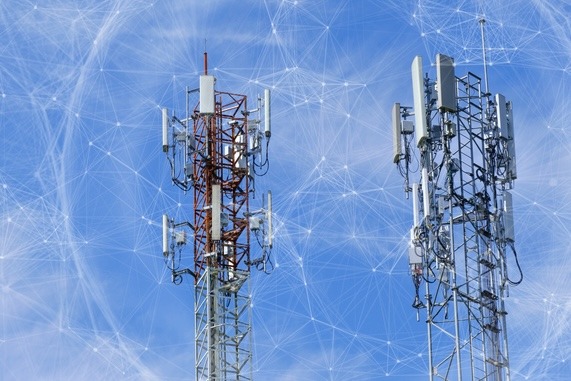Back to articles
The Power of Cloud Services

IoT devices capable of providing fast and power-efficient location details are in high demand, and nowhere more so than in the $9 trillion global logistics and transportation sector[1]. Driven by an e-commerce boom and a shift in consumer preference towards online purchases, logistics companies are shipping a staggering volume of parcels. The biggest e-commerce company of the lot, Amazon, processed 4.79 billion U.S. delivery orders in 2022, equivalent to 13.13 million a day[2].
While not every delivery is tracked in ‘real time’ at the parcel level yet, that day will come, particularly for high value or perishable cargoes. As such, logistics companies looking to improve efficiencies and reduce costs are rapidly adopting cellular IoT and Wi-Fi solutions that support real time location.
Cellular IoT and GNSS deliver RTLS
To provide real time location, such an IoT device can employ cellular IoT wireless connectivity in concert with GNSS capability—for example Nordic Semiconductor’s nRF91 Series SiPs—which is generally accurate enough (within 10 meters) for many asset tracking applications.
GNSS alone, however, is far from perfect. It won’t work indoors, and even outdoors the relatively weak signal can easily be disrupted by tall buildings, as well as other radio sources. Another challenge for GNSS-based asset tracking is the time it can take to secure a fix, and the battery drain that causes on an already resource-constrained device.
Location and low-power
One solution to the issue of battery drain is to use Assisted- and Predicted-GPS (A-GPS and P-GPS), that employ satellite assistance data stored in a Cloud database, relayed to the IoT device via an LTE-M or NB-IoT network, saving significant power compared to an extended first fix. Another option is to use the known location of cellular base stations to narrow down the position of the receiver. Single-cell (SCELL) and multi-cell (MCELL) location methods rely on identifying in which cell the tracked device is situated, and then referencing the cell ID against a database of known base station locations.
A further locationing technique which complements cellular IoT and GNSS is Wi-Fi Service Set Identifier (SSID) scanning. Every Wi-Fi access point network is identified with an SSID, and with knowledge of the SSID, it’s possible to cross reference against Cloud databases to approximately locate the position of an IoT device.
- Read more: How Wi-Fi locationing complements GNSS and cellular
- Read more: How to optimize asset tracking with Wi-Fi locationing
The power of Cloud services
To take advantage of these various locationing technologies, IoT asset tracking devices require not only LTE-M and NB-IoT cellular connectivity and GNSS, but also Wi-Fi (if using SSID locationing), and the Cloud services to support them.
This is why Nordic Semiconductor has backed its cellular IoT hardware offering—the nRF91 Series SiPs—and it’s Wi-Fi solutions—the nRF70 Series Companion ICs—with nRF Cloud and Cloud Services. By providing hardware, software, and Cloud services, Nordic offers a complete solution.
For real time asset tracking, Nordic’s Cloud Location Services can be used to assist devices and customer applications that need SCELL, MCELL, A-GPS, P-GPS and/or Wi-Fi location features, guaranteeing they will last longer in the field while also sending accurate location data to the Cloud. These features can all be implemented in the same device and used when needed, depending on accuracy requirements at any given time.
For example, if you want to track an asset moving between two locations, precise location is likely not needed, as long as it can be determined that the asset is moving towards the destination. That means an asset tracker powered by an nR91 Series SiP can use SCELL or MCELL location, while also ensuring minimal power consumption.
As the asset gets closer to delivery, more precise location data might be necessary, at which point Nordic’s Cloud Location Services can dynamically enable GNSS-based location or even Wi-Fi location (assuming the asset tracker employs Wi-Fi), to determine a more precise location and track the asset all the way to its destination.
Cloud-based security services
In addition to location support, these devices also need security credentials to connect to the Cloud. Securely provisioning devices can be complex and costly, and typically involves creating proprietary infrastructure and processes. Nordic’s Cloud Security Services solve these problems by providing a secure and unique identity for devices that can be used for authentication with Nordic Root of Trust, as well as secure provisioning to configure devices remotely with the required credentials.
For the developer this means they can ensure only authentic Nordic devices are used in their supply chain, and that their application firmware only runs on authentic Nordic silicon. It also protects against counterfeiting and cloning, and verifies the devices are what they claim to be, before they connect to the Cloud.
This combination of Cloud location and security services will spur more innovative applications by relieving companies of the burden of managing and integrating their devices, allowing them to focus their efforts on developing new and innovative solutions.
References
1. Logistics Market Size and Growth 2024 to 2033. Precedence Research, June 2024.
2. Amazon Logistics Statistics. CapitalOne Shopping Research, October 2023.


